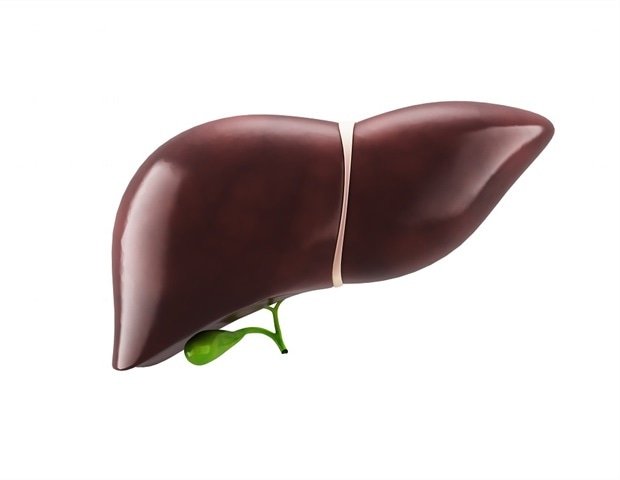Blog
The research identifies considerable molecular and scientific biomarkers for Masld
Background and objectives
The causal biomarkers for metabolic dysfunction -associated steatotic liver illnesses (MASLD) and their scientific worth stay unclear. On this research we needed to establish biomarkers for Masld and consider their diagnostic and prognostic significance.
Strategies
We carried out a Mendelian randomization evaluation to guage the causal results of two,925 molecular biomarkers (from proteomic information) and 35 scientific biomarkers on Masld. The mediation evaluation was carried out to find out whether or not scientific biomarkers conveyed the results of molecular biomarkers. The connection between considerable scientific biomarkers and Masld was validated externally in a cohort within the hospital (n = 415). A diagnostic mannequin for machine studying for MASLD was developed and validated utilizing the recognized molecular biomarker. The prognostic significance was assessed for each molecular and scientific biomarkers.
Outcomes
Six molecular biomarker inclusion FGF sign controller 4 (CNPY4), ectonucleoside triphosphate diphosphohydrolase 6 (FEPD6) and the primary histocompatibility advanced, class I, A (HLA) and eight scientific biomarkers (EG, general serum protein) had been thought-about eight biomarkers (EG, general serum protein) recognized. STP partly conveyed the impact of HLA -A on Masld (23.61%) and was related to Masld within the exterior cohort (ODDS ratio = 1.080, 95% confidence interval: 1.011–155). A random forest mannequin confirmed a excessive diagnostic efficiency (AUC = 0.941 in coaching; 0.875 within the validation). Excessive expression ranges of CNPY4 and FEPD6 had been related to the improvement and poorer survival by hepatocellular carcinoma. Low STP (<60 g/l) predicted the entire mortality (HR = 2.50, 95% confidence interval: 1.22–5.09).
Conclusions
This research identifies six causal molecular biomarkers (e.g. remarkably, STP conveys the impact of HLA-A on Masld and is related to a complete mortality.
Background and objectives
The causal biomarkers for metabolic dysfunction -associated steatotic liver illnesses (MASLD) and their scientific worth stay unclear. On this research we needed to establish biomarkers for Masld and consider their diagnostic and prognostic significance.
Strategies
We carried out a Mendelian randomization evaluation to guage the causal results of two,925 molecular biomarkers (from proteomic information) and 35 scientific biomarkers on Masld. The mediation evaluation was carried out to find out whether or not scientific biomarkers conveyed the results of molecular biomarkers. The connection between considerable scientific biomarkers and Masld was validated externally in a cohort within the hospital (n = 415). A diagnostic mannequin for machine studying for MASLD was developed and validated utilizing the recognized molecular biomarker. The prognostic significance was assessed for each molecular and scientific biomarkers.
Outcomes
Six molecular biomarker inclusion FGF sign controller 4 (CNPY4), ectonucleoside triphosphate diphosphohydrolase 6 (FEPD6) and the primary histocompatibility advanced, class I, A (HLA) and eight scientific biomarkers (EG, general serum protein) had been thought-about eight biomarkers (EG, general serum protein) recognized. STP partly conveyed the impact of HLA -A on Masld (23.61%) and was related to Masld within the exterior cohort (ODDS ratio = 1.080, 95% confidence interval: 1.011–155). A random forest mannequin confirmed a excessive diagnostic efficiency (AUC = 0.941 in coaching; 0.875 within the validation). Excessive expression ranges of CNPY4 and FEPD6 had been related to the improvement and poorer survival by hepatocellular carcinoma. Low STP (<60 g/l) predicted the entire mortality (HR = 2.50, 95% confidence interval: 1.22–5.09).
Conclusions
We establish six causal molecular biomarkers (e.g. the general protecting mirror within the serum, a few of us conveyed the impact of HLA-A on Masld and underlined a novel immune metabolic path. Primarily based on these outcomes, we develop a random forest mannequin that exhibits a excessive degree of accuracy within the identification of Masld. Linked, whereas the general protecting mirror forecast a increased general mortality. Biomarker-Meded prognosis and danger forecast in Masld. We establish six causal molecular biomarkers (e.g. the general protecting mirror within the serum, a few of us conveyed the impact of HLA-A on Masld and underlined a novel immune metabolic path. Primarily based on these outcomes, we develop a random forest mannequin that exhibits a excessive degree of accuracy within the identification of Masld. Linked, whereas the general protecting mirror forecast a increased general mortality.

